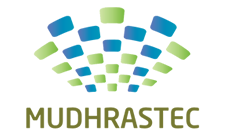
Trading Management ERP
Trading Management ERP (Enterprise Resource Planning) system involves integrating various business processes and functions to streamline operations, improve efficiency, and enhance decision-making. An ERP system can help businesses improve efficiency, reduce costs, and enhance customer satisfaction by providing a comprehensive view of all trading activities.

Here’s an overview of key components and features that are typically included in a Trading Management ERP system
Key Components
1. Inventory Management:
◦ Stock Control: Track inventory levels, manage stock replenishment, and optimize stock levels.
◦ Warehouse Management: Oversee warehouse operations, including receiving, picking, packing, and shipping.
◦ Batch and Serial Number Tracking: Manage products with batch and serial numbers for traceability.
2. Order Management:
◦ Sales Order Processing: Automate the process from order creation to delivery.
◦ Purchase Order Management: Handle purchase orders, vendor management, and procurement.
◦ Pricing and Discounts: Manage pricing strategies, promotions, and discounts.
3. Customer Relationship Management (CRM):
◦ Customer Database: Maintain detailed records of customer interactions and transactions.
◦ Sales Force Automation: Manage opportunities, track leads, and assist with sales force tasks.
◦ Customer Support: Provide tools for managing customer service inquiries and support tickets.
4. Financial Management:
◦ Accounting: Manage accounts payable, accounts receivable, and general ledger.
◦ Financial Reporting: Produce personalised reports and financial statements.
◦ Budgeting and Goals: Arrange and track financial results.

◦ Business Intelligence: Provide dashboards and analytics for data-driven decision-making.
◦ Custom Reports: Create reports tailored to specific business needs.
6. Compliance and Security:
◦ Data Security: Implement measures to protect sensitive business data.
◦ Regulatory Compliance: Ensure compliance with industry regulations and standards.
7. Integration and Scalability:
◦ System Integration: Seamlessly integrate with existing systems and third-party applications.
◦ Scalability: Support business growth with scalable architecture.
Additional Features
Multi-currency and Multi-language Support: Support international operations with multi-currency and multi-language capabilities.
